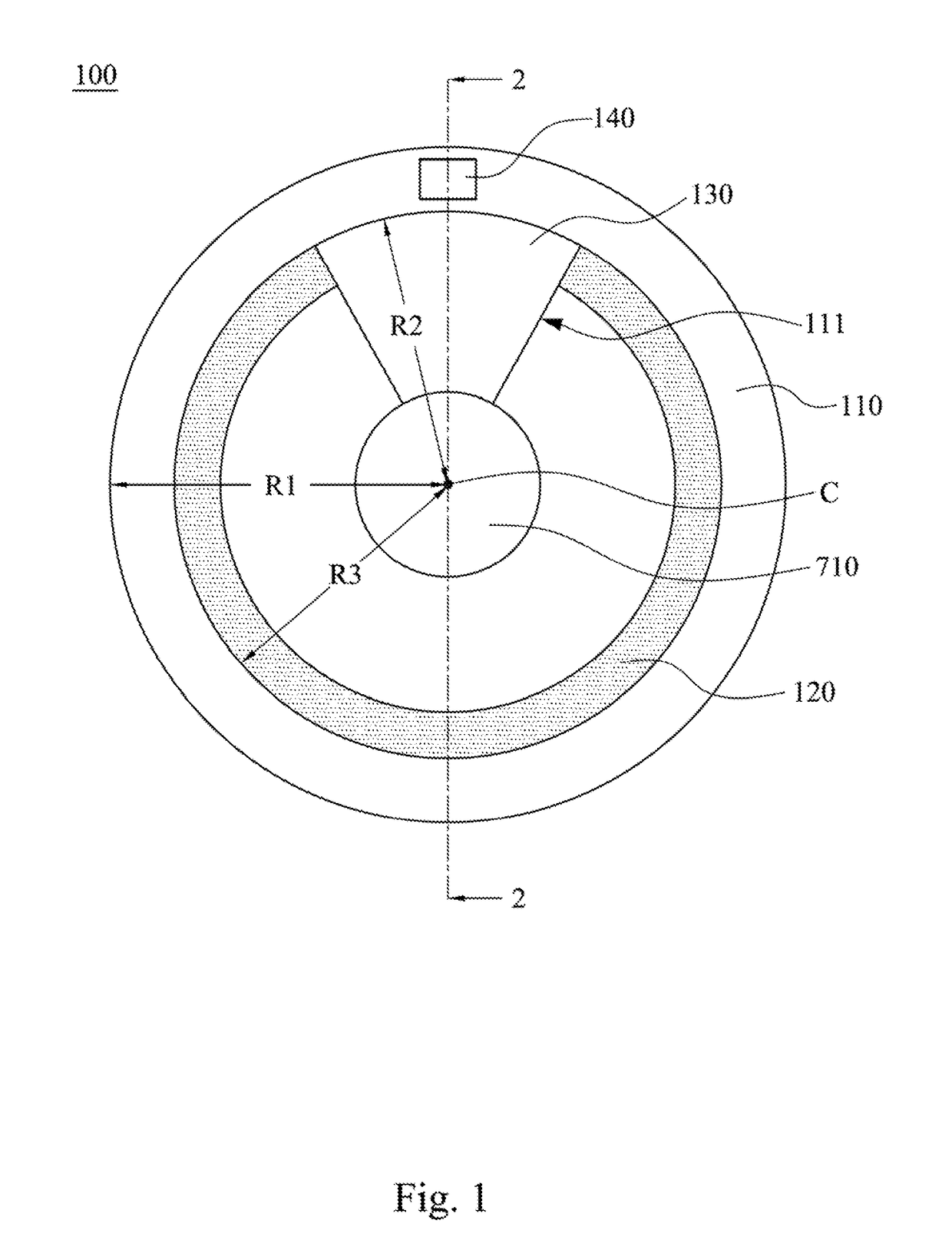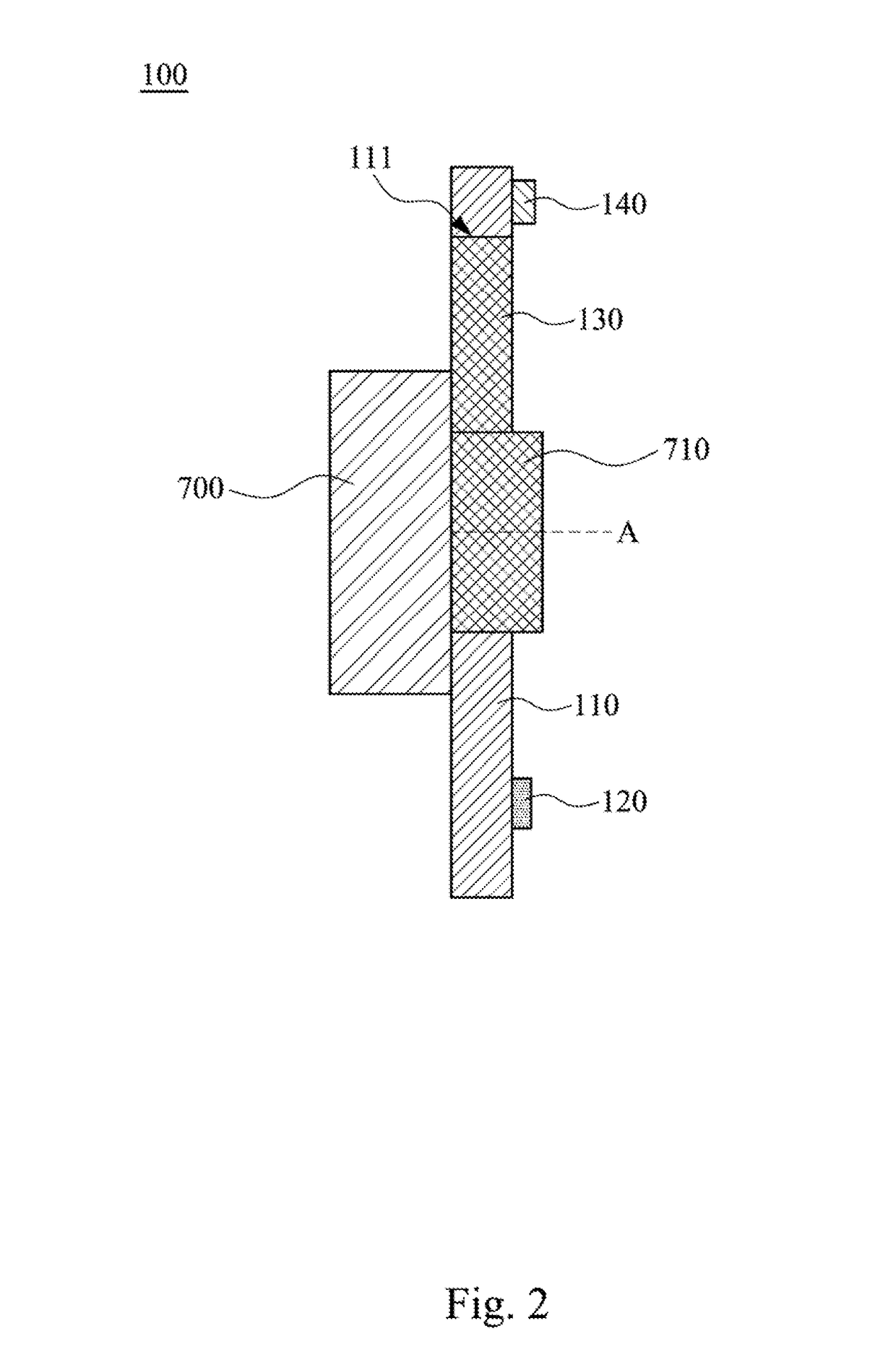Wavelength converter
a wavelength converter and converter technology, applied in the direction of instruments, mountings, spectral modifiers, etc., can solve the problems of affecting and the substrate generating loud wind noise, etc., to achieve the effect of improving the excitation efficiency of fluorescent elements
- Summary
- Abstract
- Description
- Claims
- Application Information
AI Technical Summary
Benefits of technology
Problems solved by technology
Method used
Image
Examples
Embodiment Construction
[0029]Reference will now be made in detail to the present embodiments of the disclosure, examples of which are illustrated in the accompanying drawings. Wherever possible, the same reference numbers are used in the drawings and the description to refer to the same or like parts.
[0030]Reference is made to FIGS. 1 and 2. FIG. 1 is a front view of a wavelength converter 100 according to an embodiment of the disclosure. FIG. 2 is across-sectional view of the wavelength converter 100 in FIG. 1 taken along line 2-2. As shown in FIGS. 1 and 2, in the embodiment, the wavelength converter 100 includes a substrate 110, a phosphor layer 120, and a light transmission member 130. The substrate 110 is sleeved onto a drive shaft 710 of a motor 700 and has a hollow hole 111 The hollow hole 111 is located within an outer edge of the substrate 110. The phosphor layer 120 is disposed on the substrate 110 and adjoins the hollow hole 111. The light transmission member 130 is embedded in the hollow hole ...
PUM
 Login to View More
Login to View More Abstract
Description
Claims
Application Information
 Login to View More
Login to View More - R&D
- Intellectual Property
- Life Sciences
- Materials
- Tech Scout
- Unparalleled Data Quality
- Higher Quality Content
- 60% Fewer Hallucinations
Browse by: Latest US Patents, China's latest patents, Technical Efficacy Thesaurus, Application Domain, Technology Topic, Popular Technical Reports.
© 2025 PatSnap. All rights reserved.Legal|Privacy policy|Modern Slavery Act Transparency Statement|Sitemap|About US| Contact US: help@patsnap.com



